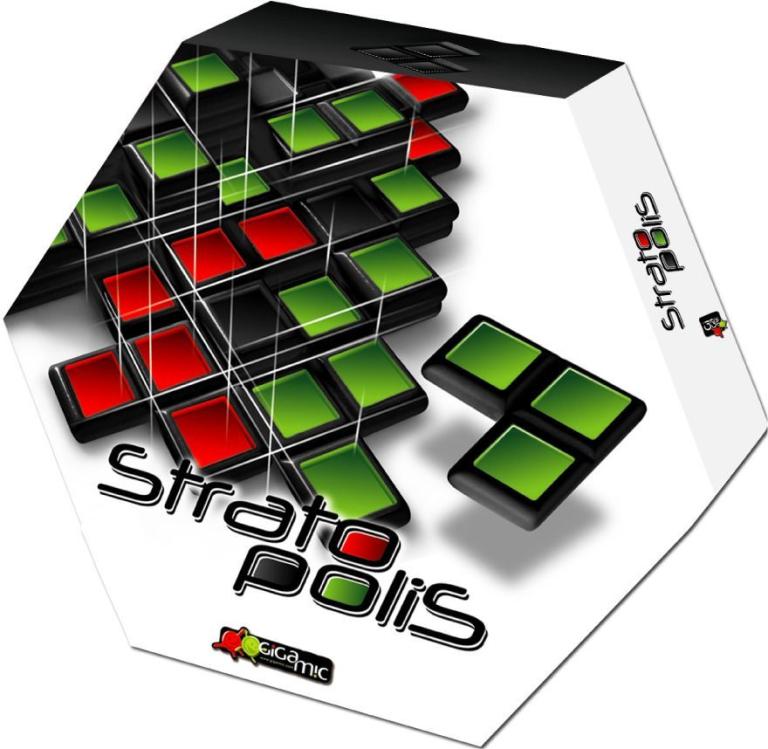Stratopolis

Stratopolis
In Stratopolis, players want to build wide, while also building big.
Each player starts the game with twenty L-shaped tiles, each comprising three squares; one player has tiles showing all green squares, green and neutral squares, or two green squares and one red square, while the other player's tiles reverse red and green. Players shuffle and stack these tiles face down, revealing only the topmost tile.
To start the game, a two-square tile (one red, one green) is placed on the table. Players then take turns adding their topmost tile to the display. A tile can be placed (1) on the table with at least one edge adjacent to an edge in play or (2) on top of at least two tiles already in play. When placed on a higher level, each square of the tile must be supported, the tile must be level, and red and green squares cannot cover one another. (Every other color play – such as green on neutral or red on red – is legal.)
Once all tiles have been played, players count the scores of their zones, to find their best zone: number of squares in a contiguously connected area of their color times the height of the square in this area that is at the highest level. The player with the highest scoring zone wins.
Variant rules invite players to play with a hand of tiles that they refresh after each turn or to play with all tiles available at all time.
Each player starts the game with twenty L-shaped tiles, each comprising three squares; one player has tiles showing all green squares, green and neutral squares, or two green squares and one red square, while the other player's tiles reverse red and green. Players shuffle and stack these tiles face down, revealing only the topmost tile.
To start the game, a two-square tile (one red, one green) is placed on the table. Players then take turns adding their topmost tile to the display. A tile can be placed (1) on the table with at least one edge adjacent to an edge in play or (2) on top of at least two tiles already in play. When placed on a higher level, each square of the tile must be supported, the tile must be level, and red and green squares cannot cover one another. (Every other color play – such as green on neutral or red on red – is legal.)
Once all tiles have been played, players count the scores of their zones, to find their best zone: number of squares in a contiguously connected area of their color times the height of the square in this area that is at the highest level. The player with the highest scoring zone wins.
Variant rules invite players to play with a hand of tiles that they refresh after each turn or to play with all tiles available at all time.
Player Count
2
Playing Time
10
-
20
Age
8
Year Released
2012
Podcasts Featuring this Game

TDT # 326 - Traditional Card Games
In this jam-packed show, Eric talks about a couple of board games, and then Tom talks about 22 games in X minutes. We preview interesting games we're looking forward to from the Spiel fair at Essen. Also, we listen to Brian talk about Beyond Balderdash, Geoff about Power, Jude about sharing, James about awards, and a brand new convention segment! After all that, we talk about our favorite traditional card games, playable with a 52-card deck.